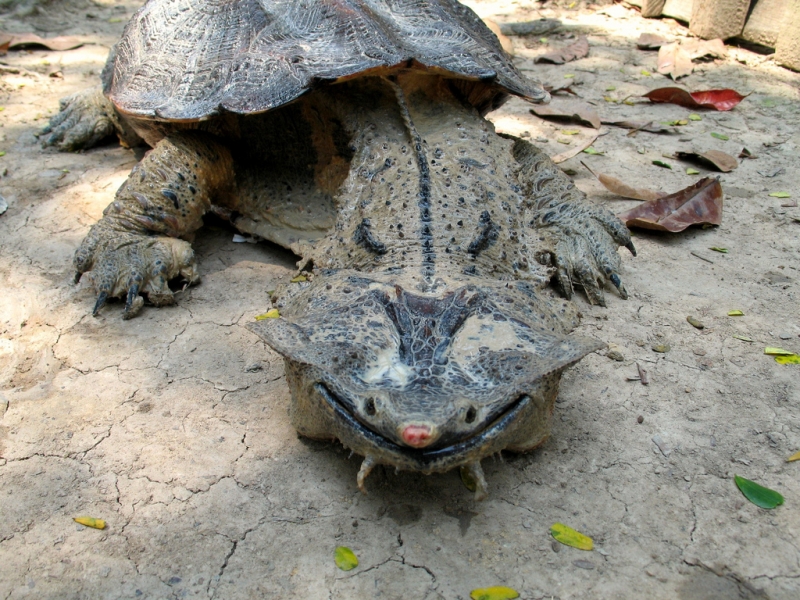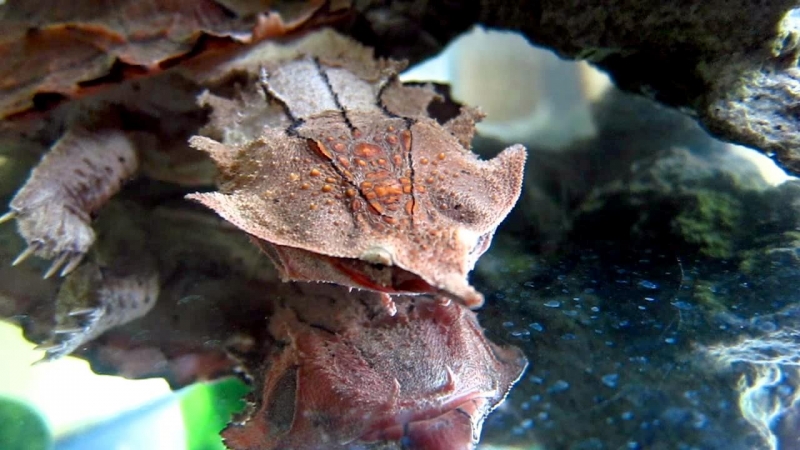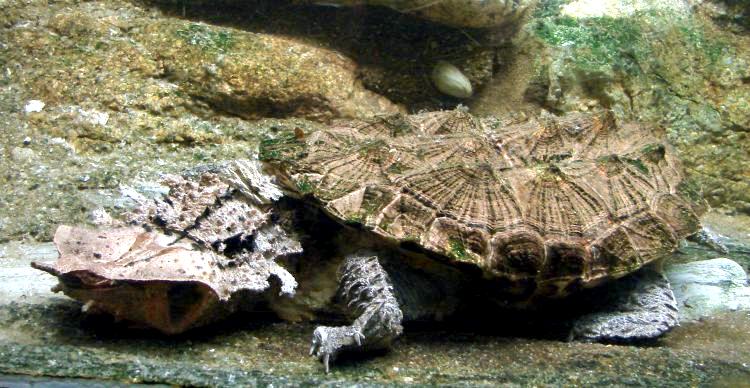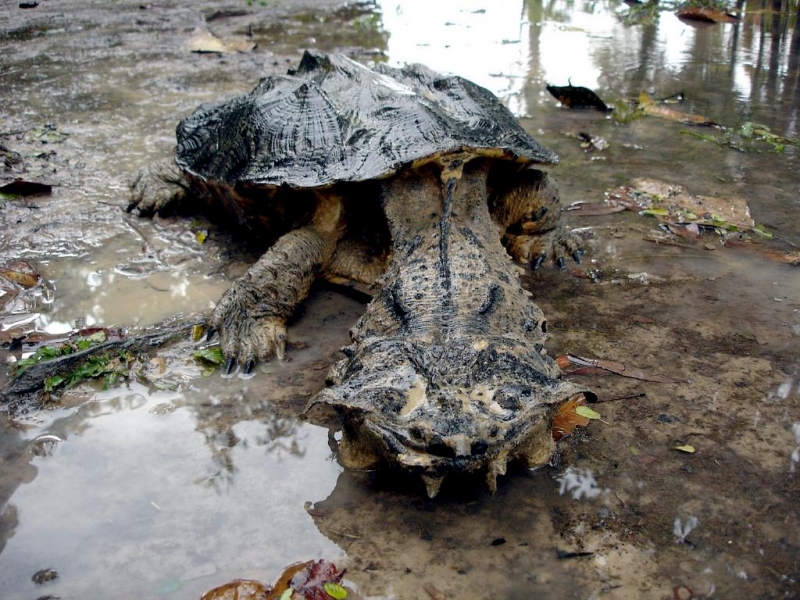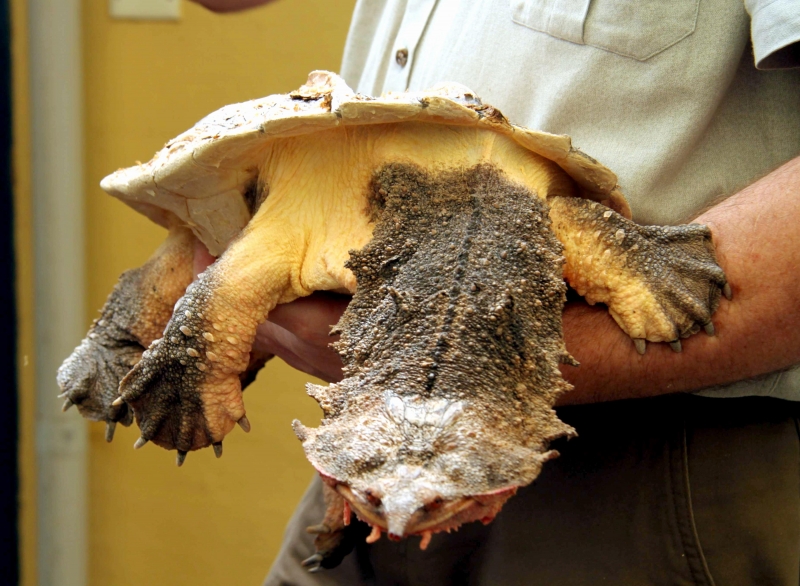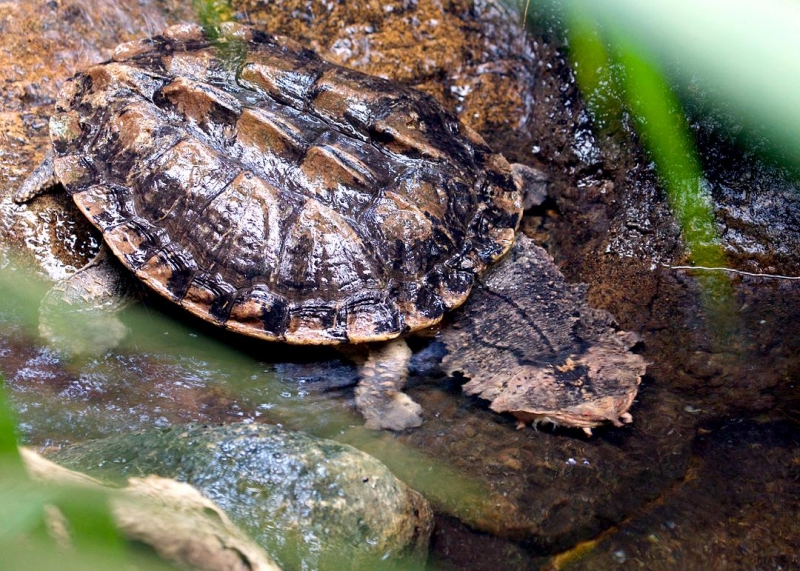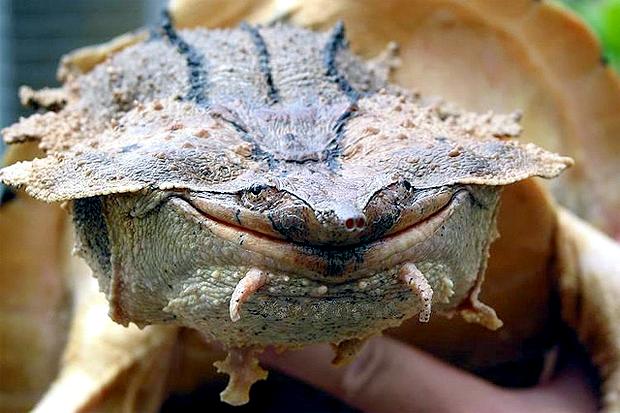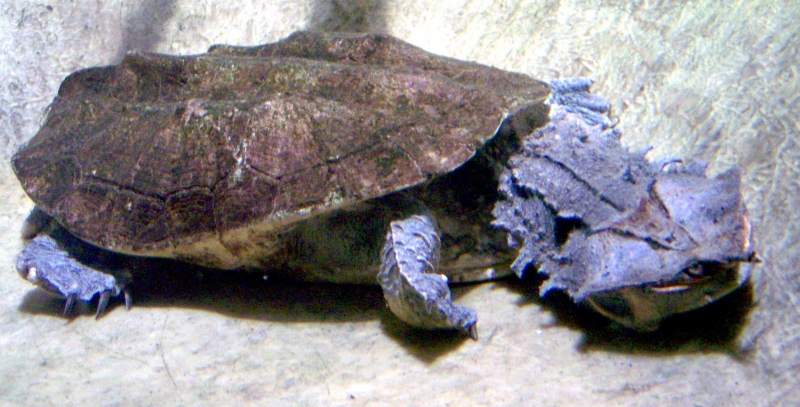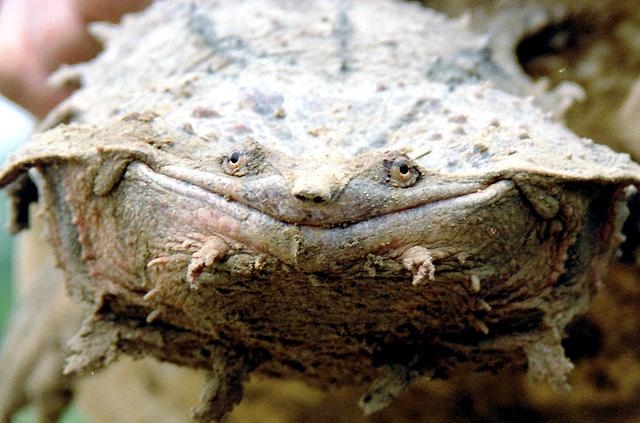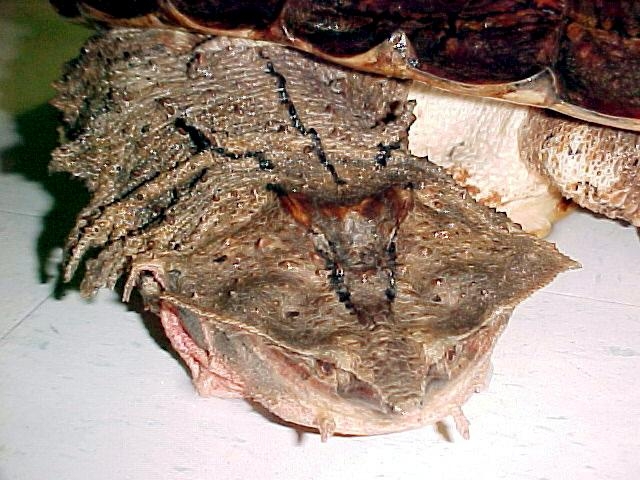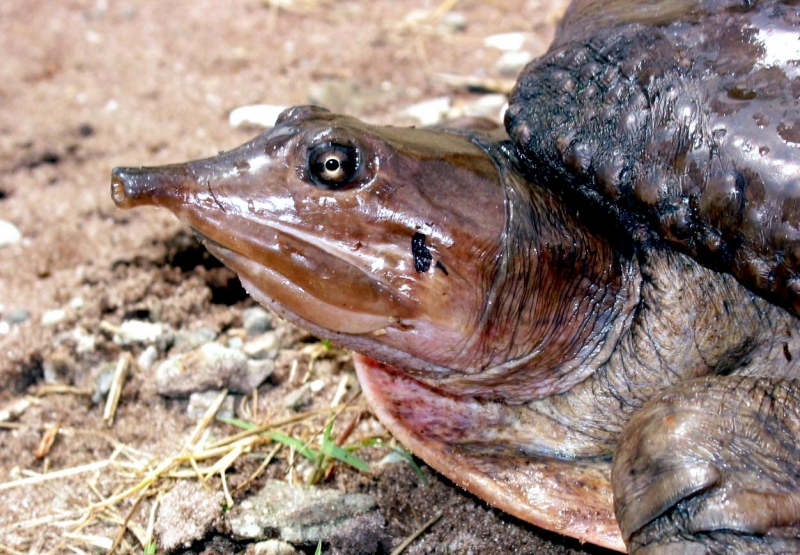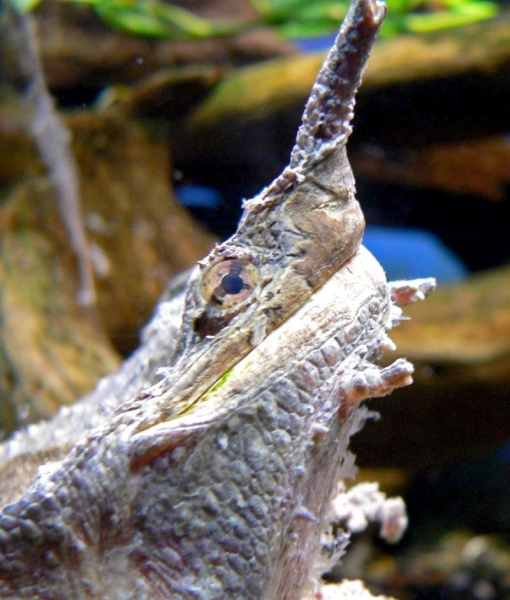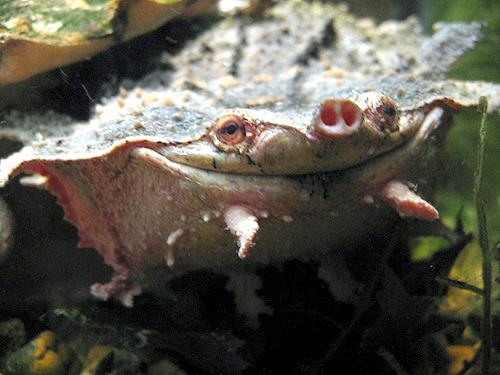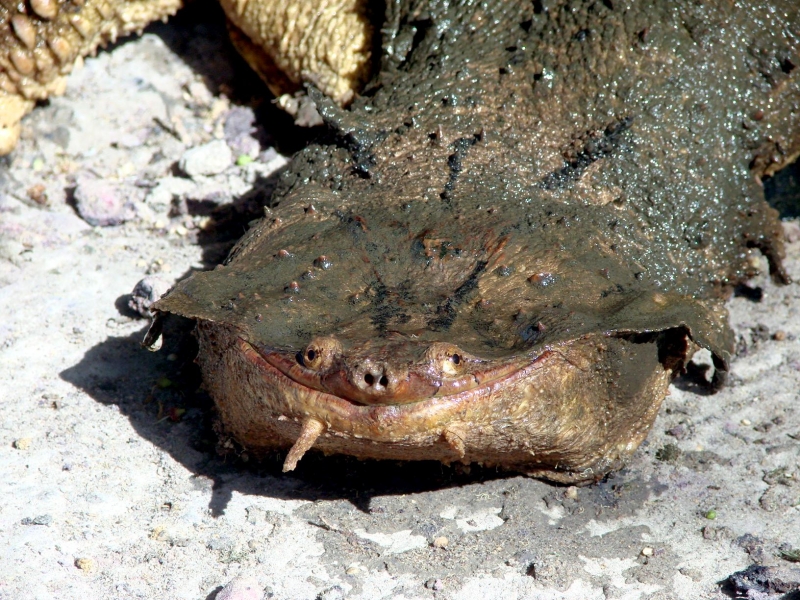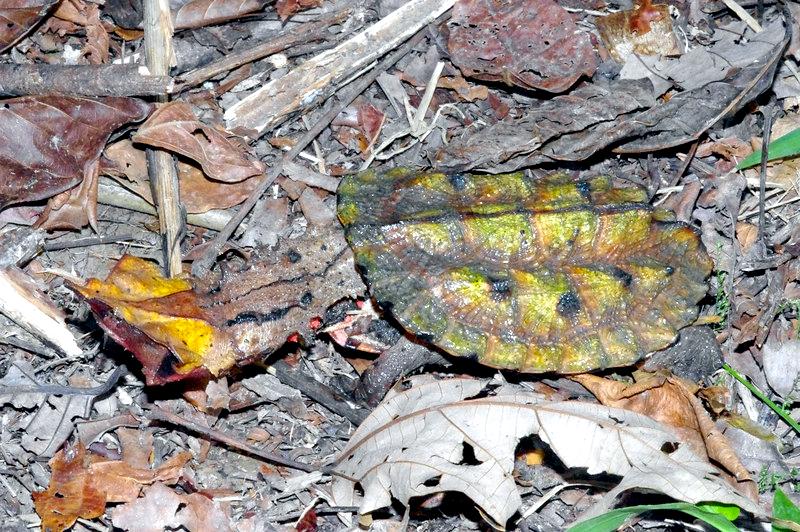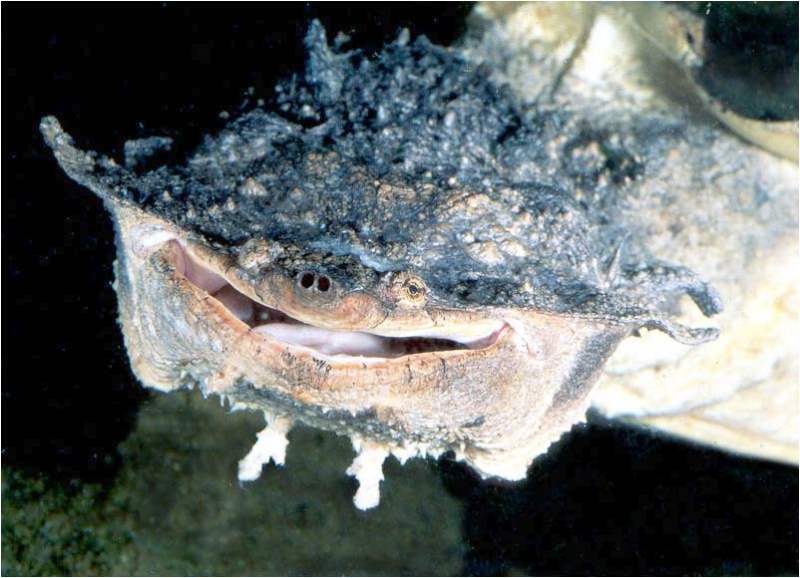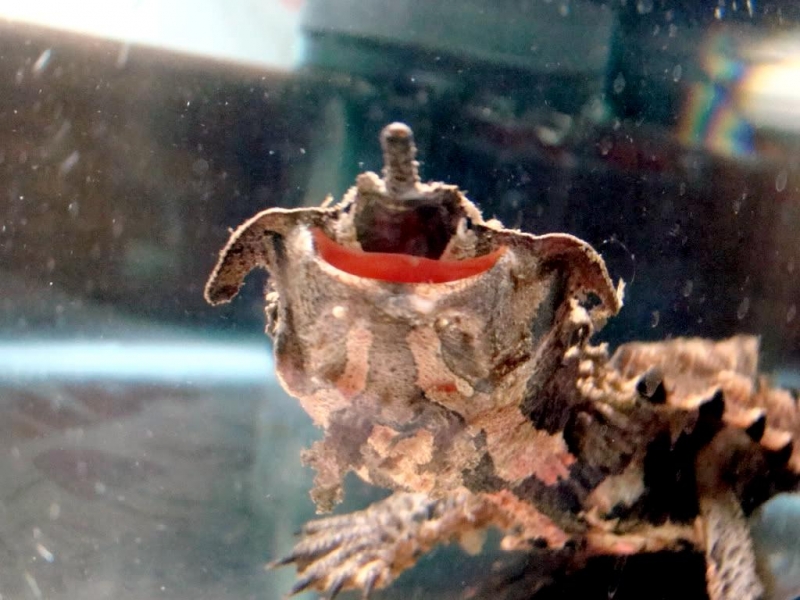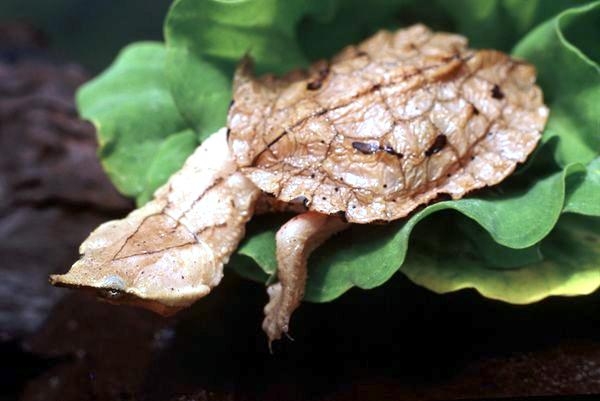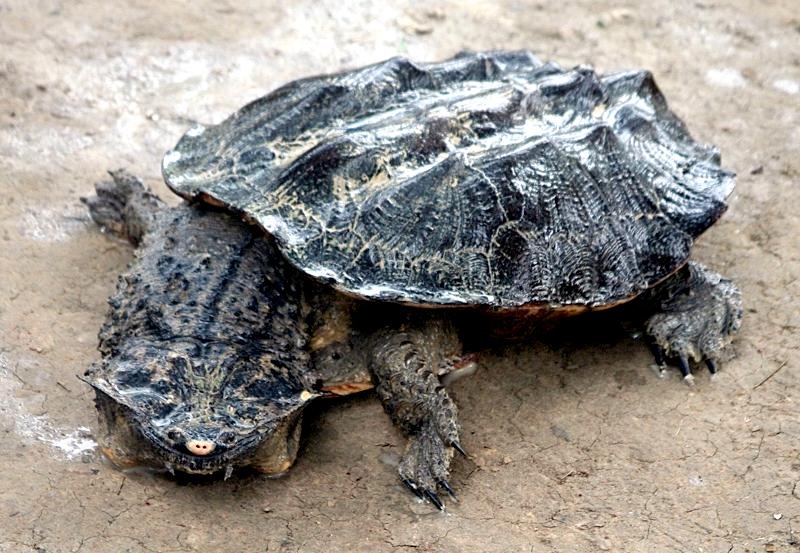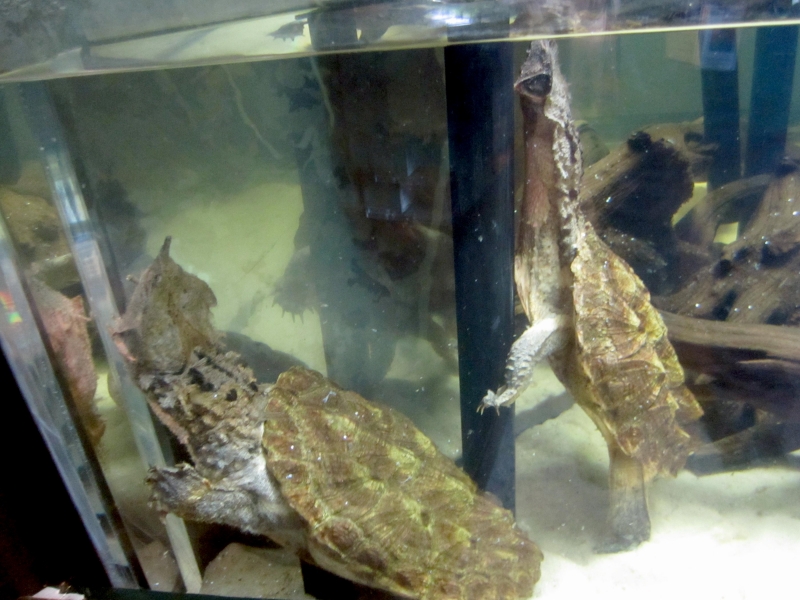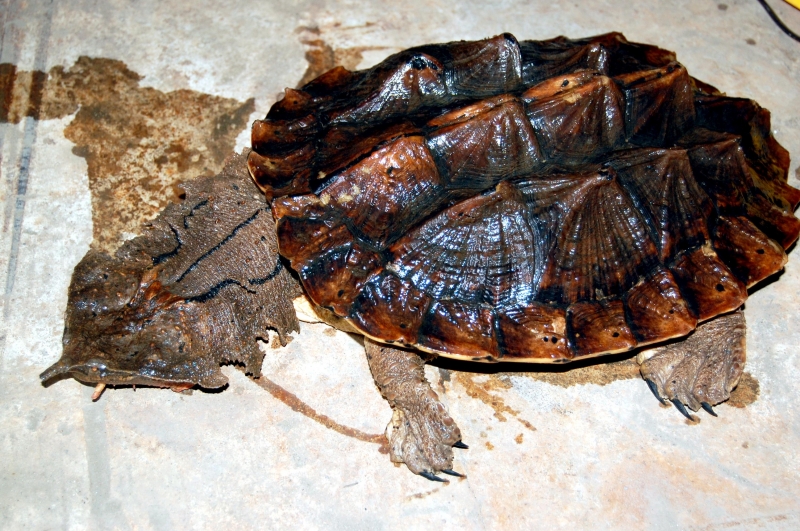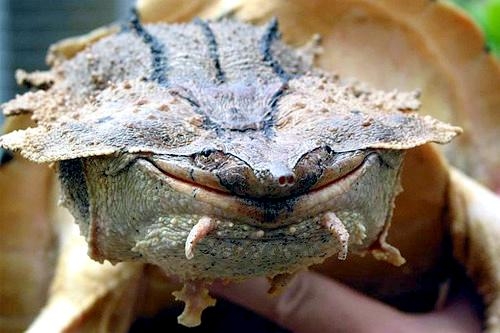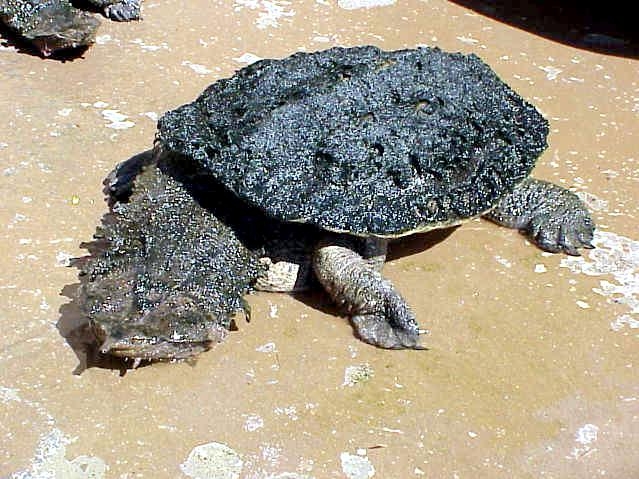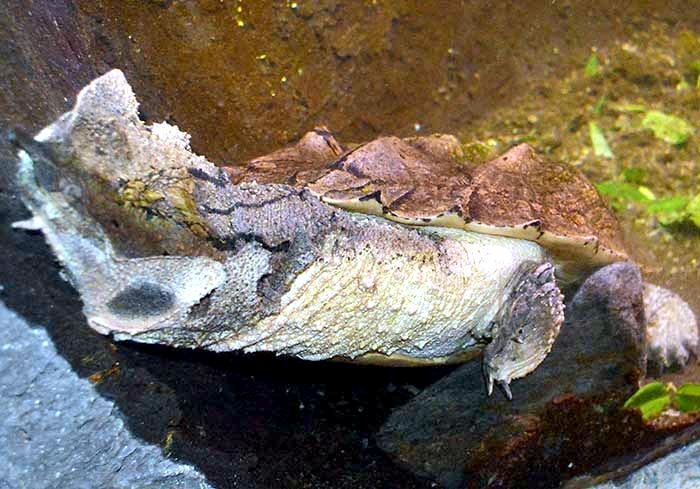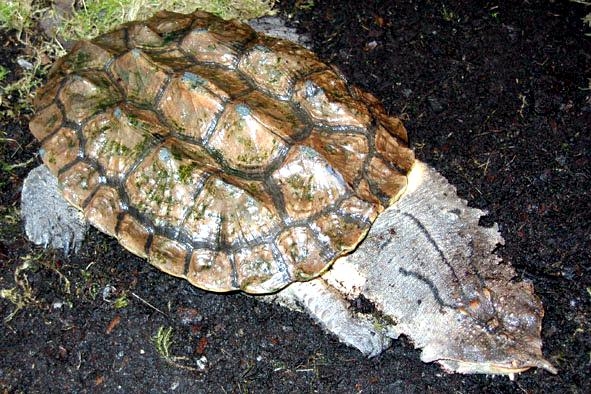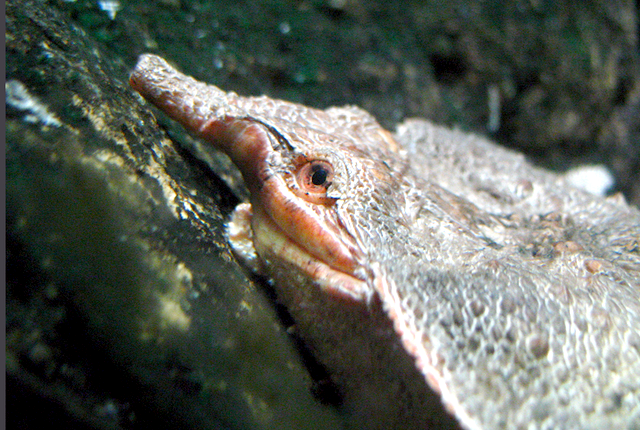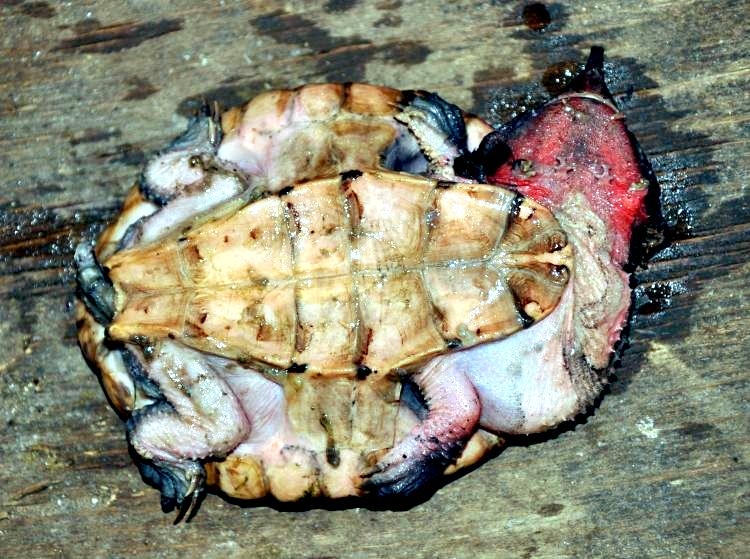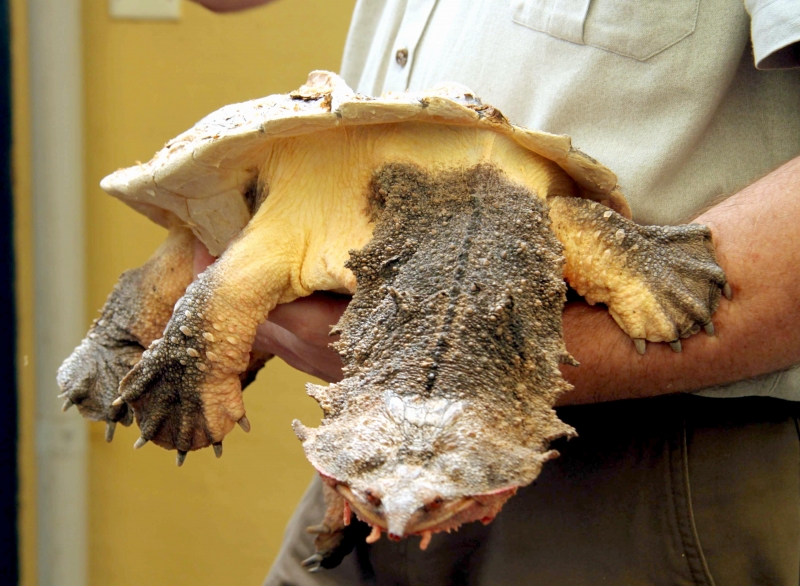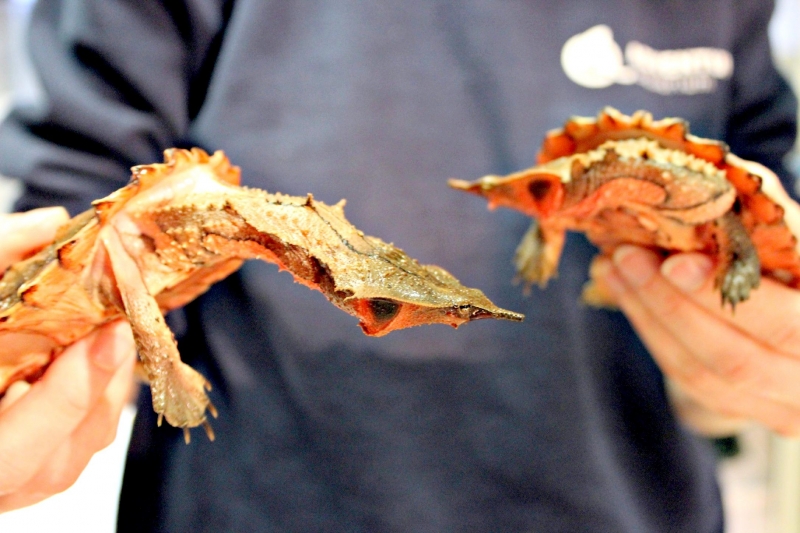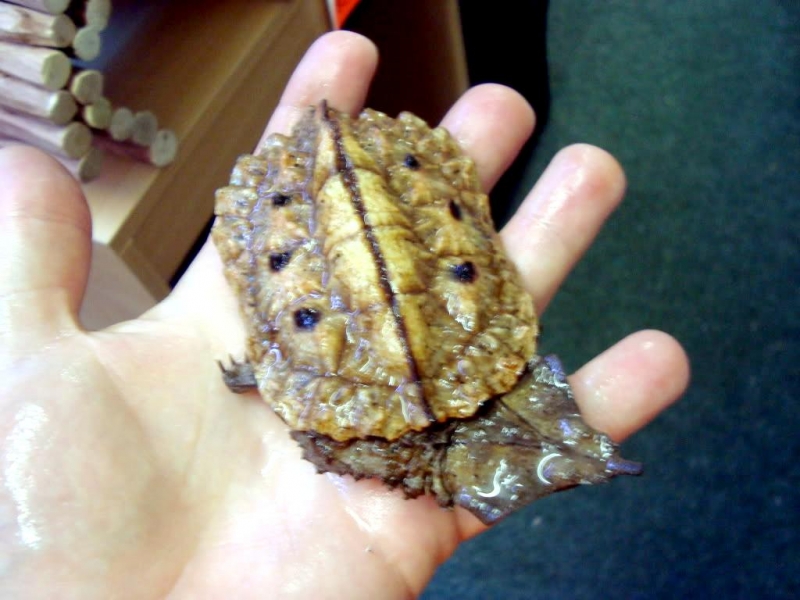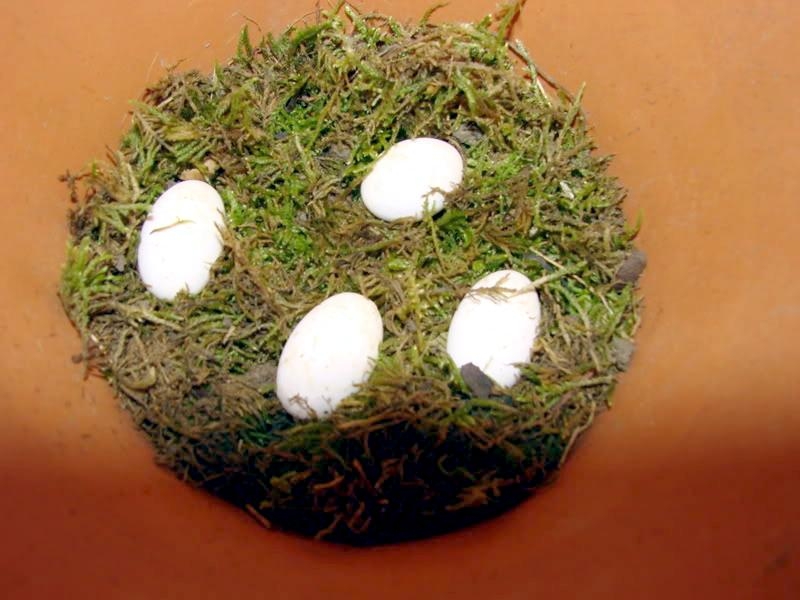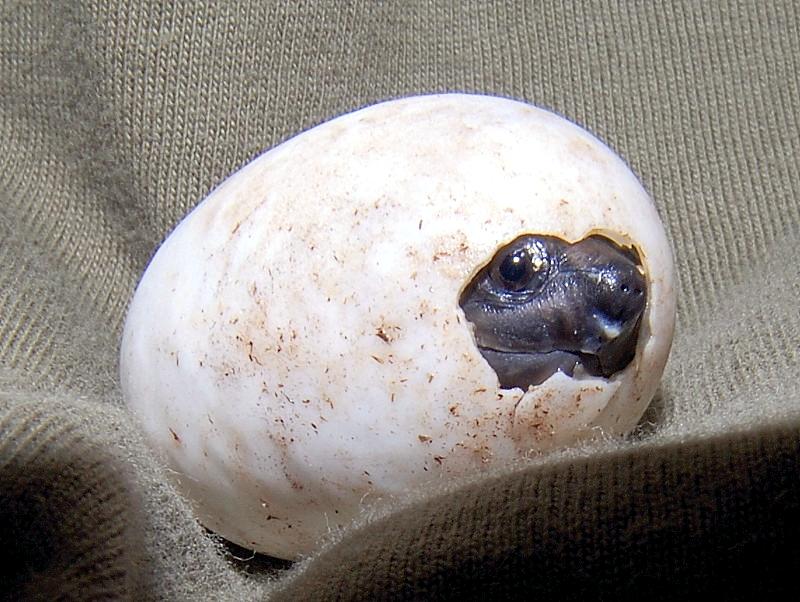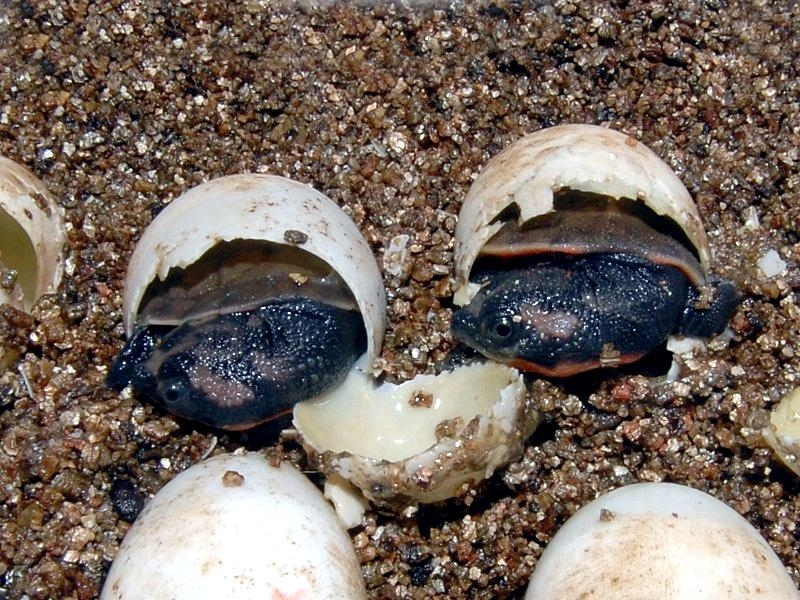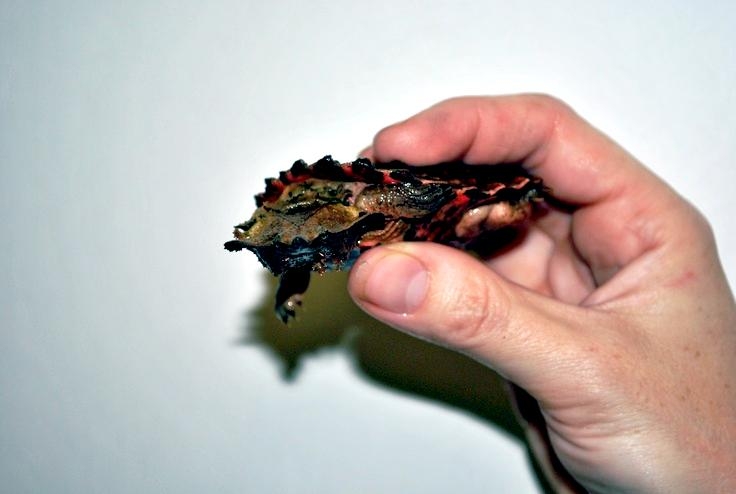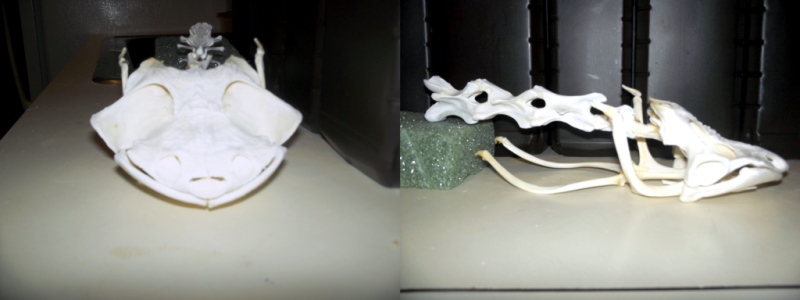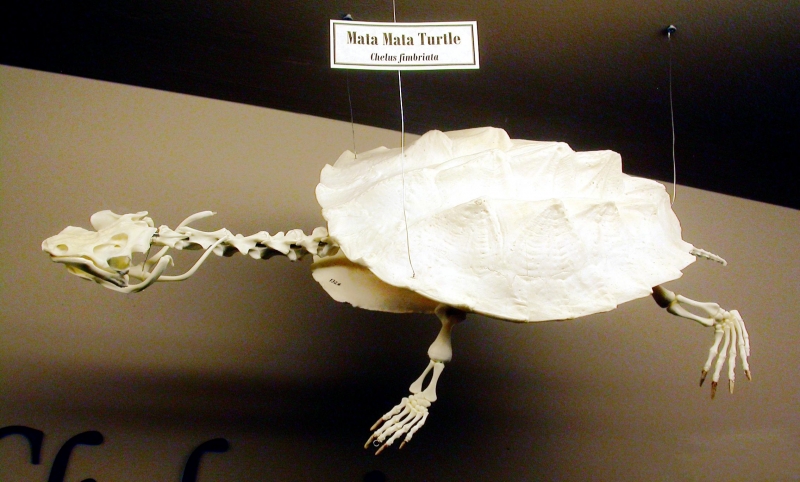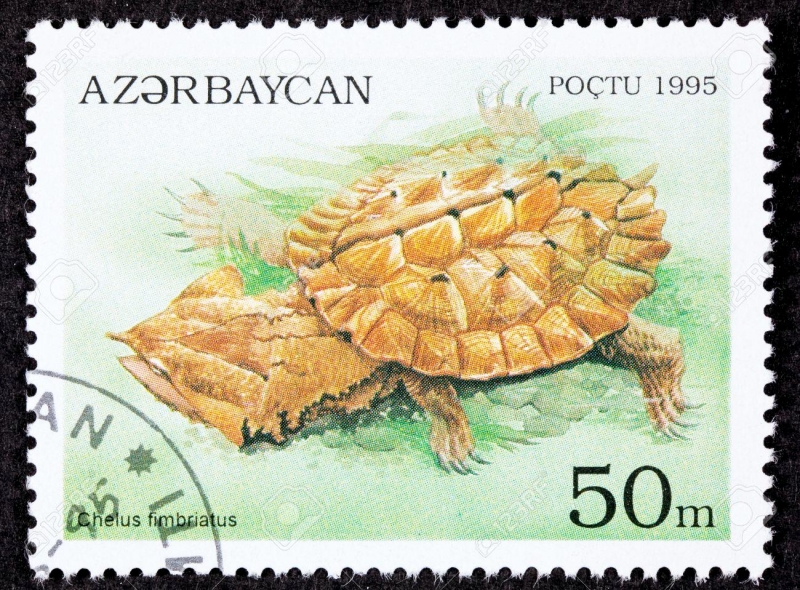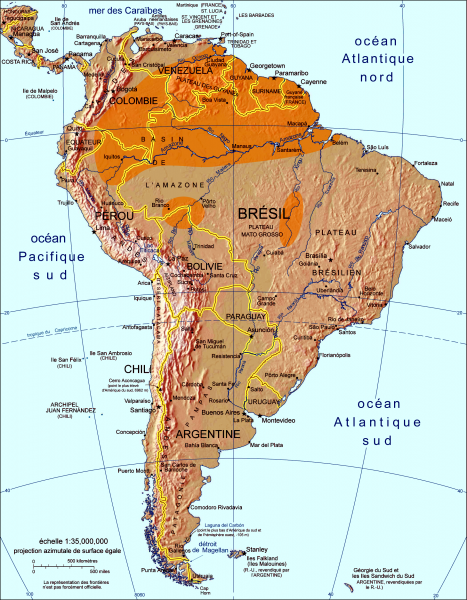“Chelus fimbriata”
Mata Mata Turtles are freakishly weird and have been referred to as “one of the strangest creatures on earth”. The turtle was first classified as Testudo fimbriata by German naturalist Johann Gottlob Schneider in 1783. The Spanish meaning for matamata is “it kills, it kills”. It was renamed 14 different times in 2 centuries, finally being renamed Chelus fimbriata in 1992. Mata Mata Turtles occur across the major drainage’s of northern Bolivia, eastern Peru, Ecuador, eastern Colombia, Venezuela, French Guiana, Guyana, Peru and northern & central Brazil. They also occur on both Trinidad and Tobago: it’s been suggested that they were transported to these islands following big mainland floods. The large, flattened head is triangular in dorsal view, with huge flaring ‘ear flaps’ that extend laterally from the back of the skull. The eyes are small and placed well anteriorly, close to the base of the short, trunk-like proboscis. This proboscis, superficially similar to that seen in soft-shell turtles, allows the animal to reach the surface when submerged and there are lots of photos and paintings that show Mata Mata Turtles engaging in this behavior. A pair of barbels are present on the chin and the jaws are weak and lack longitudinal ridges like those seen in many other turtles. The mouth is really wide, extending right across the face when the animal is seen in front view. The ears are particularly large meaning the tympanic cavities & tympanic membranes. The Matamata’s neck is remarkably long, longer than the rest of the vertebral column and very thick. As in other side-necked turtles, the animal folds the neck away to the side when wanting to conceal its head. Tassel-like outgrowths of the skin decorate the sides of the neck. The brownish or blackish carapace which can be as much as 52 centimeters long, is sub-rectangular or oval and has 3 bumpy keels running along its dorsal surface. These sometimes do look like keels in the true sense, but in other individuals they consist of rows of tall lumps. The shell’s posterior border is prominently serrated and the plastron is much narrower than the carapace. Musk ducts exit near the rear corner of the ‘bridge’, the region of the shell that connects the sides of the plastron & carapace. Algae frequently grows on the Mata Mata’s shell, aiding its camouflage. Having mentioned carapace length, it should be noted that 40-50 centimeters is very large; when the long neck is added, the animal can approach 100 centimeters in total length. This makes the Matamata Turtle the largest chelid and in fact rather large compared to turtles in general. One 1906 record referred to Mata Mata Turtles with carapace lengths of over 120 centimeters and total lengths of over 220 centimeters. It would be incredible if such monsters existed, but the data has not been accepted and seems exaggerated.
Mata Mata Turtle populations exhibit a reasonable amount of variation in color and there’s been suggestion at times that subspecies should be recognized. Animals from the Amazon are definitely different from those of the Orinoco: the former have rectangular, heavily pigmented shells and very dark markings on their heads & necks, while the latter have oval shells and have pale necks and plastra. Prior to mating, the courting male Mata Mata Turtle will extend its head towards the female while opening & closing its mouth. After mating, normally from October to December, the female excavates a nest and deposits from 1 to 2 dozen eggs in it. She does not guard the nest. Unlike most reptiles whose eggs are soft & leathery, the Mata Mata Turtle eggs have brittle shells. They are almost round and are about 3.5 centimeters in diameter. The incubation time is approximately 200 days. Nesting takes place in October in Amazonia & Colombia. The snorkel-like snout allows this turtle to lie fully submerged while breathing, with the least possible disturbance of the water surface. Despite the presence of “tapetum lucidum”, a visual adaptation in the eyes which assists the collection of light, these turtles have poor vision. However they do have excellent tactile & auditory senses. The complex folds of skin on their bodies hold sensory nerves that help to detect motion and there is a well developed tympanum on both sides of the head. The neck is innervated and is sensitive to pressure waves which enables it to detect the presence of approaching fish. The Mata Mata Turtle lays on the bottom of shallow rivers, moving so little that a thick growth of algae forms on its rough shell. Its neck fringes along with the algae growth provide a near perfect camouflage. Prey approach in search of food and are captured in a unique fashion; the Mata Mata opens its mouth at such a great speed that there is an inrush of water that also sucks in the fish. The jaws close, the water is expelled and the fish is swallowed. Camouflage as well as having a hard shell serves to protect the turtle from potential predators. Habitat degradation & capture for the pet trade could prove to be future causes for concern.
